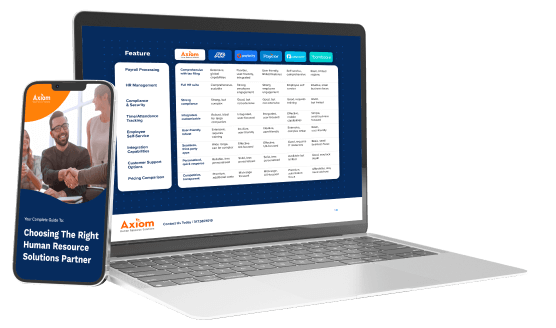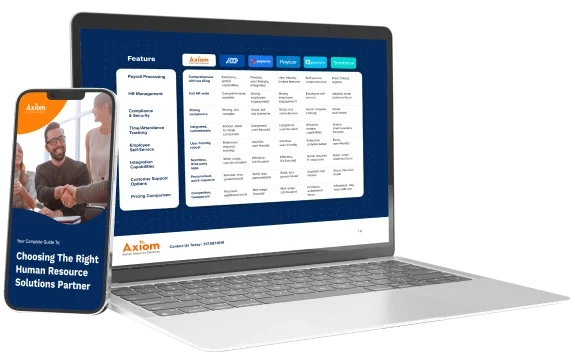HR leaders need more than a standard employee handbook. They need a document that aligns with evolving compliance requirements, clarifies policies for a hybrid workforce, and supports a positive workplace culture.
In 2025, businesses face new challenges in compliance, employee expectations, and workforce management. A well-structured employee handbook is a risk management tooland a strategic assetthat supports operational efficiency, reduces legal exposure, and improves employee retention.
This guide focuses on what seasoned HR professionalsshould include in an updated employee handbook and how to ensure it aligns with today’s workplace requirements.
The Role of an Employee Handbook in Business Operations
An effective handbook provides:
- Legal Protection– Clearly outlines policies to protect against disputes and compliance risks.
- Workforce Stability– Reduces ambiguity and ensures consistent enforcement of policies.
- Operational Efficiency– Supports streamlined HR processes, reducing administrative burden.
- Workplace Expectations– Defines professional standards, behavioral expectations, and company values.
HR leaders cannot afford a poorly written or outdated handbook. If policies are unclear or not legally compliant, the handbook can become a liability rather than a resource.
Key Updates for Employee Handbooks in 2025
1. Workplace Policies That Reflect Today’s Workforce
The modern workplace has changed, and so must workplace policies. Ensure your handbook includes:
- Clear definitions of in-office, remote, and hybrid work expectations
- Updated social media policies, reflecting personal and professional use guidelines
- Behavioral expectationsthat align with evolving workplace norms
HR leaders should align policies with legal requirements and the company’s workplace culture. Vague or outdated policies create risks and inconsistencies in enforcement.
2. Compliance and Legal Updates for 2025
Workplace compliance is shifting rapidly, with increased scrutiny on:
- Pay transparency laws, requiring clear salary disclosures in job postings
- AI-driven hiring and decision-making, with new guidelines on bias and compliance
- Independent contractor classification, as state and federal regulations tighten
- Paid leave mandates, expanding in multiple states
An employee handbook should clearly communicate how these regulations impact HR policies. Failure to update compliance sections can lead to legal disputes and financial penalties.
3. Compensation, Benefits, and Payroll Policies
Employees expect clarity in how they are compensated and what benefits they receive. HR teams should ensure the handbook includes:
- Defined payroll structures(salary vs. hourly, overtime policies, bonuses)
- Benefits eligibility and enrollment guidelines
- Performance-based compensation policies
- Paid time off (PTO) and leave structures
With payroll and benefits under increased scrutiny, vague or incomplete information in a handbook can lead to misinterpretation and compliance risks.
4. Remote and Hybrid Work Guidelines
If a company offers remote or hybrid work options, the handbook should specify:
- Who qualifies for remote work and under what conditions
- Productivity and availability expectations
- Expense reimbursement policies for home office setups
- Data security and confidentiality guidelines
HR teams need clear, enforceable policiesthat prevent inconsistencies across teams and locations.
5. Workplace Safety and Employee Well-Being
HR leaders should address workplace safety and employee support, including:
- Occupational Safety and Health Administration (OSHA) compliance
- Mental health and wellness benefits
- Workplace violence prevention policies
- Procedures for reporting concerns confidentially
The handbook should reinforce a company’s commitment to a safe and supportive work environment.
6. Termination, Disciplinary Actions, and Conflict Resolution
HR teams should ensure policies related to terminations and disciplinary actions are structured to:
- Clarify progressive discipline procedures
- Define at-will employment policies in applicable states
- Outline conflict resolution and mediation processes
- Establish reporting procedures for employee concerns
Clear, legally sound policies reduce disputes and ensure HR teams have documented procedures to follow.
Best Practices for Maintaining an Effective Employee Handbook
An employee handbook should not be static. HR leaders should:
- Conduct an annual review– Laws and workplace expectations change. Policies should be reviewed and updated regularly.
- Make the handbook accessible– A digital version should be available, with acknowledgment tracking for compliance.
- Provide handbook training– Employees should understand key policies, not just sign off on them.
- Work with HR and legal professionals– Employment laws are complex, and compliance requires expertise.
HR teams that treat the handbook as a living documentrather than a one-time policy guide will be better positioned to manage compliance and employee relations effectively.
Why an Updated Employee Handbook Is a Competitive Advantage
For HR leaders, an updated handbook is more than just an administrative necessity—it’s a risk management tool and a strategic asset.
- Prevents legal disputes and protects the company from compliance violations
- Ensures HR teams have consistent, enforceable policies
- Enhances the employee experience by setting clear workplace expectations
HR teams that take a proactive approach to handbook management will position their organizations for long-term success.
Need to update your employee handbook? Axiom HRS provides expert HR consulting and compliance solutions to ensure your policies align with 2025 workplace requirements.


